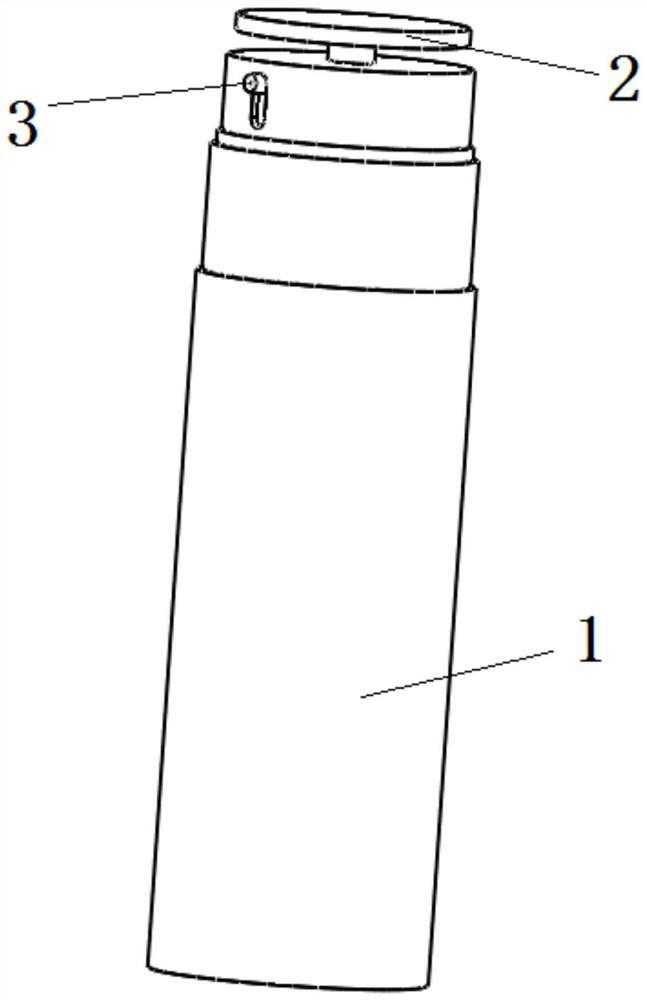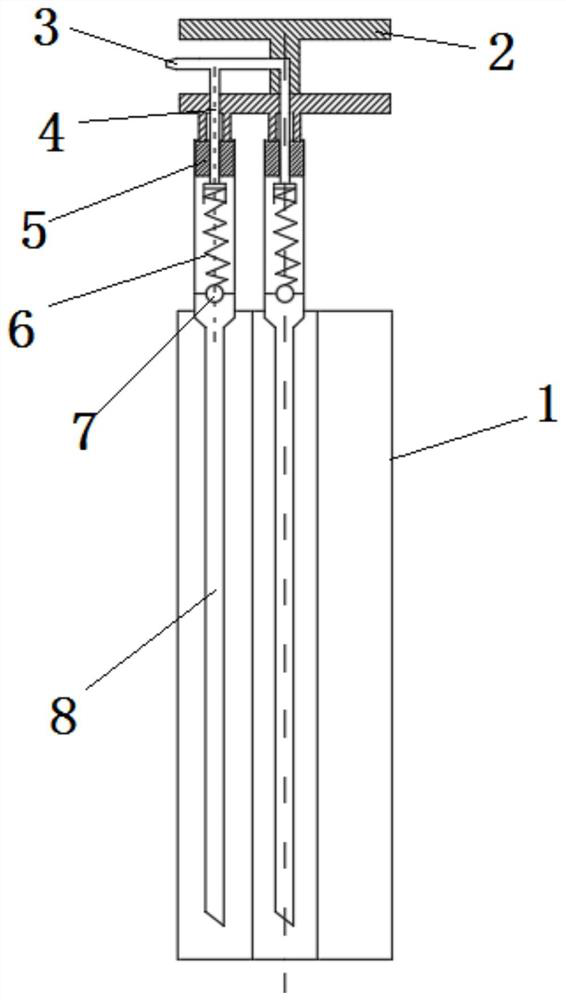Stable vitamin C preparation and application method thereof
A technology of vitamins and preparations, applied in skin care preparations, medical preparations containing active ingredients, pharmaceutical formulas, etc., can solve problems such as poor stability of vitamin C, improve efficacy, reduce the risk of oxidation, and improve oxidation stability Effect
- Summary
- Abstract
- Description
- Claims
- Application Information
AI Technical Summary
Problems solved by technology
Method used
Image
Examples
Embodiment 1
[0031] A stable formulation of vitamin C comprising agent A, agent B and airtight containers (such as Figure 1-2 shown).
[0032] The container in this embodiment has an inner layer cavity and an outer layer cavity, and the inner layer cavity and the outer layer cavity have independent liquid guide tubes 8, and the two liquid guide tubes 8 communicate with the same nozzle 3, and the liquid guide tube 8 A liquid spraying structure is respectively arranged inside, and the liquid spraying structure of the container may be an existing press-type liquid spraying structure, which is not limited here. The container in this embodiment includes a main body 1, a pressing handle 2, and a nozzle 3, and the spraying structure is a pressing pump. The main body is cylindrical and includes an inner cavity and an outer cavity. The pressing pump includes a piston 5, a spring 6, and a steel ball 7. The piston 5 is connected to the pressing handle 2, the nozzle 3 is respectively connected to ...
Embodiment 2
[0037] The difference between this embodiment and Example 1 lies in the composition and content of Agent A and Agent B. Specifically, Agent A is composed of the following components in mass percentage: vitamin C 25%, betaine 8%, EDTA disodium 0.02 %, balance 1,2-propanediol. Agent B is an aqueous agent, consisting of the following components in mass percentage: 3% 1,2-pentanediol, 0.5% glycerol glucoside, 0.2% xanthan gum, 0.05% ethylhexylglycerin, 0.05% caprylyl glycol and Balance water. The addition of betaine and disodium EDTA further increases the overall specific gravity of agent A, which is more conducive to covering agent A with polydimethylsiloxane after the container is shaken and left standing. At the same time, betaine can prevent the crystallization of vitamin C, and disodium EDTA can complex metal ions such as iron to prevent the oxidation of vitamin C catalyzed by trace iron ions in the system.
[0038] In this example, the mixing ratio of agent A and agent B i...
Embodiment 3
[0040] The difference between this example and Example 1 lies in the composition and content of Agent A and Agent B. Specifically, Agent A consists of the following components in mass percentage: vitamin C 20%, betaine 2%, EDTA disodium 0.03 %, balance 1,3-propanediol. 1.5 g of liquid paraffin was also added to the inner layer of the container. Agent B is composed of the following components in mass percentage: 2% of 1,2-pentanediol, 0.5% of glycerol glucoside, 0.3% of xanthan gum, 0.1% of ethylhexylglycerin, 0.02% of caprylyl glycol and the balance of water.
[0041] In this example, the mixing ratio of agent A and agent B is 1:3.
PUM
 Login to View More
Login to View More Abstract
Description
Claims
Application Information
 Login to View More
Login to View More - R&D
- Intellectual Property
- Life Sciences
- Materials
- Tech Scout
- Unparalleled Data Quality
- Higher Quality Content
- 60% Fewer Hallucinations
Browse by: Latest US Patents, China's latest patents, Technical Efficacy Thesaurus, Application Domain, Technology Topic, Popular Technical Reports.
© 2025 PatSnap. All rights reserved.Legal|Privacy policy|Modern Slavery Act Transparency Statement|Sitemap|About US| Contact US: help@patsnap.com


